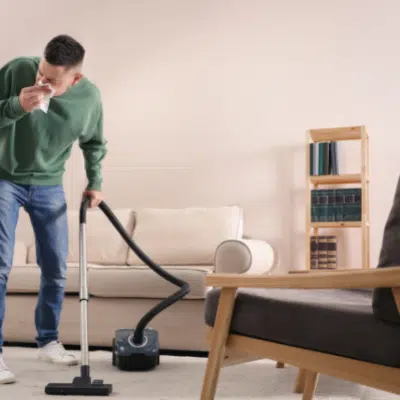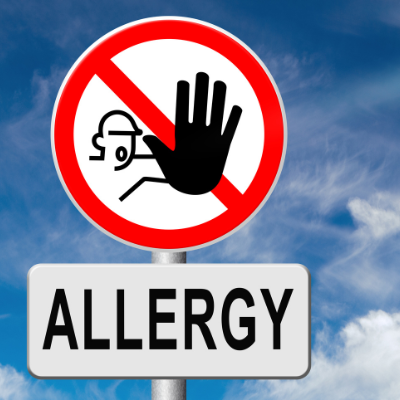It’s estimated that over 50 million people experience seasonal allergies or also known as hay fever symptoms at least once in their lifetime. As prevalent as allergies are, they are not usually life-threatening. Typically, symptoms are manageable with careful considerations to avoid triggers. But some individuals experience persistent or severe allergy symptoms that affect practically every aspect of their lives, including shortness of breath and sleep. Many of these symptoms are not solely influenced by weather, though many people believe otherwise.
Anyone in Los Angeles who thinks they’re safe from allergies may be in for a rude surprise. Despite having a subtropical climate most of the year, the area is also prone to dry, hot air, rainy and cool weather, leaving many Angelenos feeling like their allergies are driving them crazy. Whether it is food allergies, environmental, or nature-related, an ENT doctor can provide relief, especially if these symptoms coincide with sinus infections or cause nasal, ear, or throat pain, blockages, congestion, or structural abnormalities.
Prepping the Home
The most common cause of allergies is exposure to irritants. Many people may not realize it, but some of the most common and notorious offenders are located inside their homes. Though Los Angeles is warm and sunny most of the time, many people spend a lot of time indoors with irritants that can trigger severe and frequent allergy symptoms or mask an underlying ear, nose, or throat medical condition, such as sinusitis or nasal polyps.
Indoor environments may be safe for many things, but that is not always the case with allergies. Many indoor environments have allergens that put those sensitive to them at risk of experiencing frequent and severe allergic reactions. Bugs, dust mites, pet, and human dander, mold, and temperature-related conditions are the most common allergens found in Los Angeles area homes.
Maintaining a clean home is vital to reducing and preventing allergy symptoms, but they are not always enough. Many Angelenos manage their symptoms with ENT care and the following preventative measures:
Eliminating clutter
It’s not easy getting rid of personal and treasured items but holding onto too many of them can lead to a cluttered home. Dust, human and animal dander, mold, and other common allergens accumulate everywhere. The more items inside the home add to the number of surfaces dust, dirt, pollen, and allergens accumulating, increasing the risk of rare and mild symptoms becoming more serious and frequent.
Dusting often
Dust, pollen, dander, and other airborne allergy triggers are not always obvious and can be hard to spot. People with allergies are sensitive to dust and other particles in the air that normally float about. Many of these particles are inhaled before they can settle and accumulate. They are a common source of upper respiratory irritation, inflammation, sinus infections, red, watery eyes, and a runny nose. Dusting several times a week is vital to minimize dust, dander, and other allergens throughout the home or workplace. Using an air purifier with a HEPA filter is highly beneficial as well.
Regulating humidity and temperature
Hot and sunny days sure do feel good. So do the days spent lounging indoors with the air conditioning blasting ice cold air. High heat and humidity levels are bad for allergies. It may seem ideal to rely on the skin to assess the temperature and humidity levels and plan activities accordingly, and that’s fine. But anyone with allergies that seem to flare up due to extreme temperatures and air moisture irregularities should track these conditions in their home or indoor environments so they can make the necessary adjustments to improve them.
Dry air is common indoors, especially in air-conditioned environments and with cool weather. It’s also a significant issue for those who suffer from allergies, sinus infections, and nasal structure defects, such as nasal polyps, congestion, or mild respiratory ailments. Breathing dry air can dry out the mucus membranes in the nose and lungs, making it difficult to breathe, and cause coughs, sneezes, eye irritations, throat soreness, and more. Using a humidifier and dehumidifier where suitable can help restore proper moisture balance to the air to prevent allergy symptoms and infections.
Prepping for Outdoors
The weather and other factors influence the amount of pollen, dander, and airborne contaminants in the air that trigger allergies. While not much can be done to change the outdoors, you can modify your behaviors to minimize allergy symptoms.
Pay attention to the weather. Avoid going outdoors or spending too much time outside on days or at times when the air is too hot, dry, or cool. Some people with weather-related allergies can tolerate certain weather conditions better than others. Do what works best for you.
- Plan activities around pollen counts. Download a pollen tracking app or follow weather and allergy bulletins to know when it’s best for you and your allergies to stay inside.
- Use antihistamines to manage minor allergy symptoms. Many allergy sufferers rely on over-the-counter medications and remedies to prevent allergy attacks.
See an ENT doctor for allergy treatment. Sometimes, medical attention is the best way to prevent allergies or reduce symptoms or symptom severity. Allergies are commonly triggered by allergens and irritants. However, allergic reactions or allergy-like symptoms can also occur from underlying medical issues, such as sinusitis, enlarged nasal turbinates, or a deviated septum.
Regardless of where you live in Los Angeles, allergy symptoms, sinus infections, and nasal polyps don’t have to ruin your days, so C/V ENT Surgical Group for minimally-invasive treatments that can make living and breathing with allergies easier.


 Pay attention to the weather. Avoid going outdoors or spending too much time outside on days or at times when the air is too hot, dry, or cool. Some people with weather-related allergies can tolerate certain weather conditions better than others. Do what works best for you.
Pay attention to the weather. Avoid going outdoors or spending too much time outside on days or at times when the air is too hot, dry, or cool. Some people with weather-related allergies can tolerate certain weather conditions better than others. Do what works best for you.